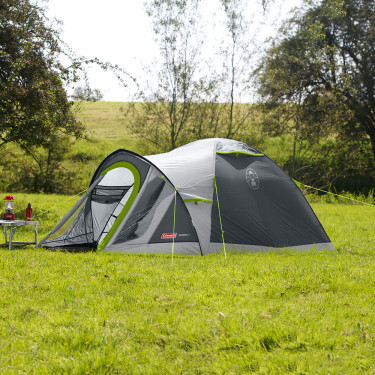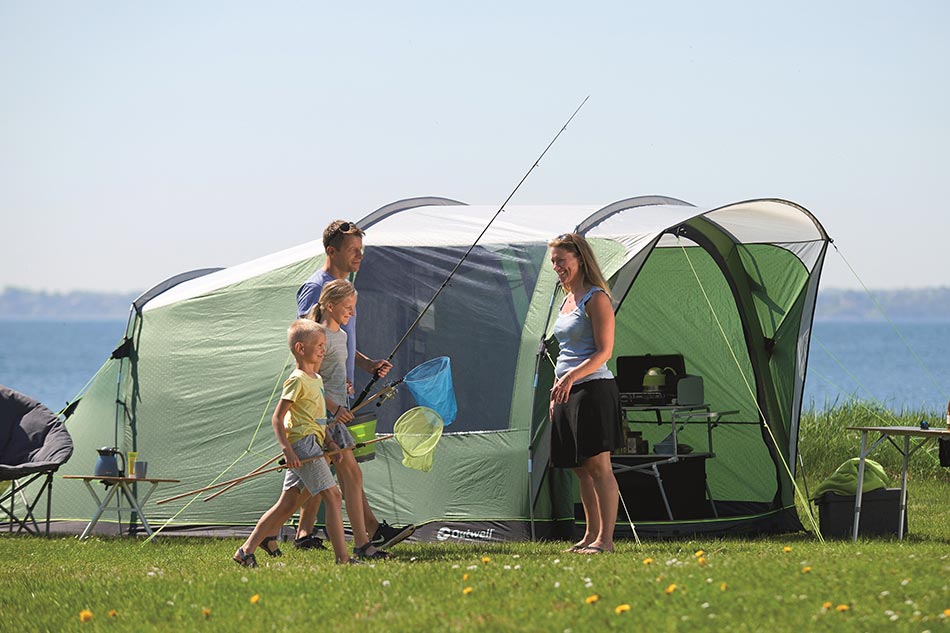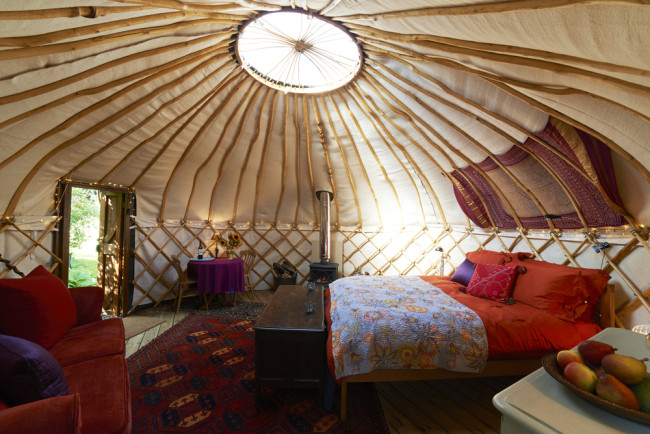How To Pitch A Tent Like A Pro
Granted, it’s not ideal if it throws it down with rain the whole time – especially with the ever-changing nature of a British summer – but at least if your tent is put up properly you have somewhere dry to take shelter.
Here at Winfields, we want you to have the best possible holiday, which is why we’ve made this guide to help you pitch a tent like a pro. Whether you’re a seasoned camper or a rookie, we’ll take you through the important steps, from before you leave to on-site advice.
Read on to learn more about how to put up your tent quickly and easily with Winfields Outdoors…
Whilst different tents will come with their own instruction manuals (see more about the importance of instructions below), there are some general rules you can follow to make sure you’re pitching your tent correctly.
Below, we’ve picked out some of our top tips and tricks to help you understand how to put up a tent for a comfortable camping trip.
- Use a Tent Footprint: by pegging down a tent footprint first, you can position your tent exactly where you want it, as well as provide extra protection to your groundsheet. This will also give you a rough idea of how big your pitch needs to be to comfortably fit your tent. Using a tent footprint also helps to keep your tent clean when you’re packing it away – saving you precious time and energy.
- Peg down the groundsheet first: the rest of the pegging can be done later, but you need to make sure your groundsheet is put down correctly to make sure it doesn’t go anywhere.
- Lay out the flysheet: laying out the flysheet, or outer layer of your tent, means you have a rough idea of where to put the poles. You can also double-check everything is zipped up (see why below).
- Start pegging at the back: by pegging down the back of the tent first, even before any poles are in, you can anchor the tent, preventing it blowing away in the wind. You can then go and re-peg once you’re done.
- Feed the poles into the correct channel: gently feed the poles into the right channel – but don’t force them. Putting too much pressure on getting the poles into your tent could break them. If it feels like you are forcing them, double-check they aren’t snagging on anything internally.
Top tip: some tents, like the Vango Tay 200 2 Man Tent, use colour-coded poles to help you put them in the right place.
- Push the poles: avoid pulling tent poles. If your tent has poles connected by elastic, pulling them will serve only to separate them and make your job more difficult.
- Make sure all zips are closed: ensure all zips are closed when pitching a tent to make sure you’re able to get the right amount of tension in the frame. Too much and your doors won’t close, too little and you won’t be able to make the best use of any internal space.
- Hammer pegs correctly: pegs should be hammered in using a mallet at a 45-degree angle, with the hook pointing away from the tent. Don’t stand on them or you’ll risk bending them.
- Pay attention to guy lines: any guy lines should follow the seams of the tent where possible. Also, make sure your guy lines are tensioned properly to provide support to your tent frame without straining it.
- Fully extend all pegging point straps: this will make putting the poles into the pins much easier and reduce the risk of snapping or bending the poles.
- Attach any inner tent linings: some tents have inner chambers, which will need to be attached properly.
- For larger tents: once you’ve pegged down the back and erected the poles, drag the tent forward and peg out the two front guy lines. This will help keep the tent in place so you can peg the rest of it down.
- Be mindful of tension: don’t pull everything so tight that it has no room to give in windy conditions. Instead, a small amount of slack will allow your tent to adjust.
Of course, these instructions are for a tent with poles. For air tents, the instructions will be different, as you’ll need a pump to inflate the channels. Some air tents, like the Zempire Pro TL V2 Air Tent, even have a single inflation point to make pitching your tent even easier.
Top tip: inflatable tents could be considered quick pitch tents, as they can be erected in a matter of minutes.
Once you’ve done your research, explored your options, and found the best Tent for your camping style, there are some things you should do before taking it out for a weekend – just to make sure pitching goes without a hitch.
Check your tent
Before you get anywhere near the campsite, make sure to check over your tent to ensure that everything is as it should be. You don’t want to try and put it up onsite only to realise there’s a nasty tear or broken pole.
If you do find some damage, check out our Ultimate Guide to Tent Repair and Maintenance to see how you might be able to fix it yourself. Of course, as we’re a full service outdoors supplier, we also have a great range of Tent Spares and Repairs to make it easy for you to pick up some essential maintenance supplies.
Top tip: you should also double-check new tents, just to be on the safe side.
We recommend pitching a tent in your back garden or even a nearby field just to confirm that everything is in order – and you know what you’re doing.
Read the instructions
That leads us nicely onto our next point, which is to read the instructions for your new tent.
So many people completely ignore manufacturers instructions when pitching a tent… and it often leads to disaster.
The instructions aren’t in there for fun. So, even if you’ve put up a thousand tents before, it’s always worth reacquainting yourself with them to confirm you know what you’re doing. Plus, for model-specific instructions, or Inflatable Air Tents, you may need that extra level of guidance to make sure you know how to put up your tent right each time.
Top tip: putting your tent together correctly isn’t just necessary to ensure you have a comfortable, covered (and dry) night’s sleep. It will also help your tent to last longer, and reduce the risk of damage, as parts aren’t being put under unnecessary stress by being in the wrong place.
Ask for help
Unless you’re on a solo camping trip, get someone to help you put your tent up before and during your trip. This is particularly important if you have a large tent, as trying to do it all by yourself will either take you a considerable amount of time (or end in arguments that could definitely be avoided).
Even for two man tents, if there’s someone else there to give you a hand, accept their help and you’ll be kicking back and relaxing much quicker.
You can’t just rock up to a field or campsite and pitch your tent in any old place. Even if you’re given a specific pitch, there are still a few things to consider about where exactly to set up your tent, such as:
Find flat ground
If possible, always try to find flat ground when you’re pitching a tent. It makes putting up your tent a lot easier – and is just generally a lot more comfortable for sleeping on.
Top tip: of course, you could make your camping trip even more comfortable with an Airbed or Camp Bed from Winfields Outdoors.
If you do have to pitch on a slope, position the tent so the door is facing downhill and/or in the same direction as the prevailing wind. This makes it less likely for rain to get in or for sudden gusts of wind to get caught inside the tent.
Top tip: it may go without saying, but try to pitch at the top of the hill if possible. This will help to prevent flooding, and give rain somewhere to go.
Leave plenty of room
Always try to leave a good amount of space around your tent. Try to leave at least 5 metres between yourself and other tents to allow for plenty of room for guy lines. Leaving space will reduce the risk of tents blowing into each other in high winds, and is also good for privacy’s sake.
Also, make sure you pitch far away from campfire spots. The last thing you want is for your tent or equipment to catch fire.
Top tip: obviously, if you’re somewhere where space is a premium (like a music festival), you might not have the luxury of a large pitch. But, still do your best to leave as much room as possible around your tent.
Use bushes for shelter
It’s not so important to leave the same amount of room from bushes and hedges, although you should still make sure you have enough space for guy lines. In fact, you can somewhat use bushes and hedges to protect you from wind and rain. However…
Don’t pitch a tent under a tree
It might seem tempting to pitch your tent under a tree, but it’s not as good an idea as you think. For starters, rainwater will drip very loudly onto your tent. But you have to be more worried about tree sap, as this will prove very tough to get off once you’ve arrived back home.
Also, if any birds have taken residence in the tree… Well, we’re sure you know where we’re going with that one.
Top tip: it might sound dramatic, but should there be a thunderstorm, the last place you want to be is under a tree.
Avoid wet ground
Where possible, try to avoid wet and marshy ground. Not only will this make pitching the tent difficult, but will also increase the likelihood of water seeping into the tent. The bottom of hills are particularly troublesome as, obviously, any rain or groundwater will run down and collect there.
The ground close to streams or ditches may also be saturated, so choose your spot carefully.
Clear the area
Before you lay out your tent, make sure you clear the area and ensure it’s free from anything that could damage the tent in any way. This includes rocks, stones, sticks, and even tent pegs left behind by previous campers.
Top tip: removing small debris protects your tent, but it also helps you have a more comfortable camping experience.
Camping made easy with Winfields Outdoors
At Winfields, we’re keen to make exploring the outdoors simple, comfortable, and exciting for the whole family. That’s why you can find a wide selection of buying guides, how-to’s and advice, and even activity ideas on the Winfields Outdoors blog…
Everything You Need to Know About Camping by the English Coast | The Ultimate Guide to Blackout Tents | Cooking Like a Pro: A Guide to Outdoor Cooking














thanks for your comment and we're glad you want to take the plunge and have a go at camping. We'd recommend you take a look at our 5 & 6 person tents, which will give you the space you need without feeling cramped. You can see all those here: www.winfieldsoutdoors.co.uk/equipment/tents/5-6-person-tents/
When it comes to specific models, we'd recommend the Sunncamp Shadow 600 - www.winfieldsoutdoors.co.uk/sunncamp-shadow-600-exclusive-tent/. The layout of this tent is great for families, and it's on sale at the moment, making it fantastic value for money.
Other excellent tents you might want to consider are the Vango Orava 600XL, the Kampa Hayling 6, and the Kampa Watergate 6.
We hope that helps. If you have any other questions, please let us know.
Great to hear that you're looking to start camping - I'm sure you'll enjoy it!
This would all depend on your budget. I would advise you to give our customer care team a call and they can happily talk to you in further detail about this. Contact details for our customer care team can be found here.
One thing I would personally recommend, with you going to France, is potentially looking at a polycotton tent which you can read more about in our guide here.
I hope this helps.